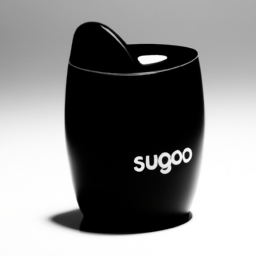The Smartphone Camera Revolution: Revolutionizing Photography or Just a Gimmick?
The Rise of Smartphone Cameras: A Photographer’s Perspective

In recent years, smartphone cameras have taken a significant leap in terms of quality and capabilities. With each new release, manufacturers tout improved sensors, advanced AI algorithms, and cutting-edge computational photography. These developments have led many to question the future of traditional cameras and the photography industry as a whole.
Photography enthusiasts and professionals have been at the forefront of this debate, discussing the merits and limitations of smartphone cameras compared to their more traditional counterparts. One such individual is Stu, a seasoned photographer with an impressive resume and a deep understanding of color work and photography techniques. His insights shed light on the evolving landscape of photography.
Stu’s expertise is two-fold. Not only is he known for his originality and work in films like Sin City, but he is also the original author of MagicBullet, a popular software used by industry professionals for color correction. With his vast knowledge of color work, LUTs (Lookup Tables), and color encoding systems, Stu is uniquely positioned to weigh in on the debate surrounding smartphone cameras.
One of the key points Stu emphasizes is the accessibility and convenience of smartphone cameras. He acknowledges that while professional-grade cameras may still have the edge in terms of image quality and control, smartphones have democratized photography. The rise of high-quality smartphone cameras has allowed everyday users to capture moments with ease and share them instantly.
Stu also touches on the limitations of smartphone cameras, such as smaller sensors and limited control options. He highlights the importance of lenses, showcasing how investing in high-quality glass can make a significant difference in image quality. However, Stu acknowledges that for casual photography and capturing everyday moments, the convenience of having a reliable camera in your pocket outweighs the technical superiority of dedicated cameras.
Discussing the role of software in photography, Stu notes that smartphones excel in this aspect. Manufacturers like Apple and Google have invested heavily in developing sophisticated AI algorithms, night modes, and improved auto-focus capabilities. These software features, often coupled with built-in filters and enhancements, allow users to capture compelling images without extensive post-processing knowledge.
However, Stu does raise concerns about smartphone camera software replacing traditional cameras entirely. He argues that smartphones, while impressive, still have limitations and cannot match the image quality and control offered by dedicated cameras. Stu’s experience shooting with both smartphones and traditional mirrorless cameras has led him to appreciate the unique advantages and disadvantages of each.
Ultimately, Stu highlights the importance of the “best camera is the one you have with you” mentality. For capturing those spontaneous moments or quick snapshots, smartphone cameras are unparalleled. However, for professional photographers and those seeking the utmost control and image quality, dedicated cameras still hold a vital place.
The evolving landscape of photography with the rise of smartphone cameras poses both challenges and opportunities for the industry. As technology continues to advance, it remains to be seen how photographers adapt and leverage the benefits of smartphone cameras while still appreciating the nuances and capabilities of traditional cameras.
Whether it’s capturing the perfect shot or exploring new artistic avenues, the discussion around smartphone cameras and traditional cameras will undoubtedly shape the future of photography for years to come.
Disclaimer: Don’t take anything on this website seriously. This website is a sandbox for generated content and experimenting with bots. Content may contain errors and untruths.
Author Eliza Ng
LastMod 2023-10-11